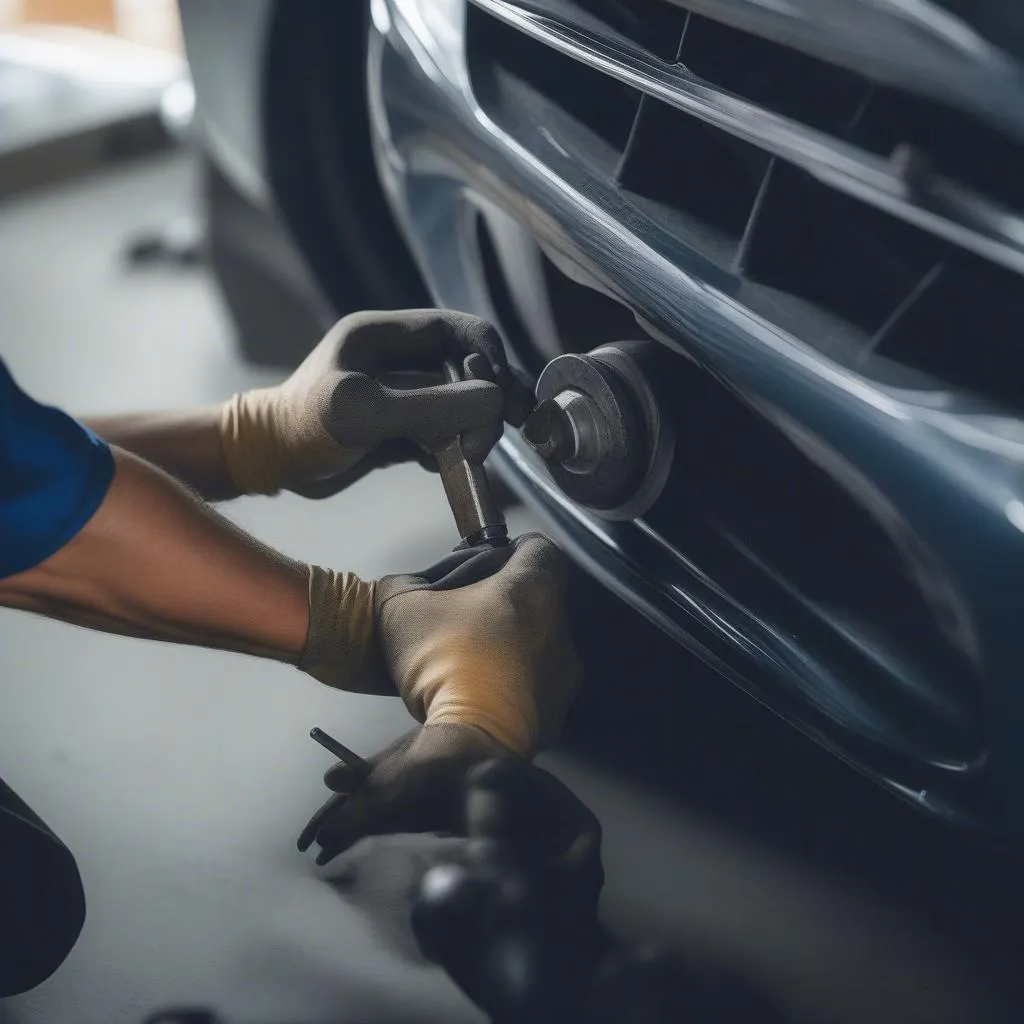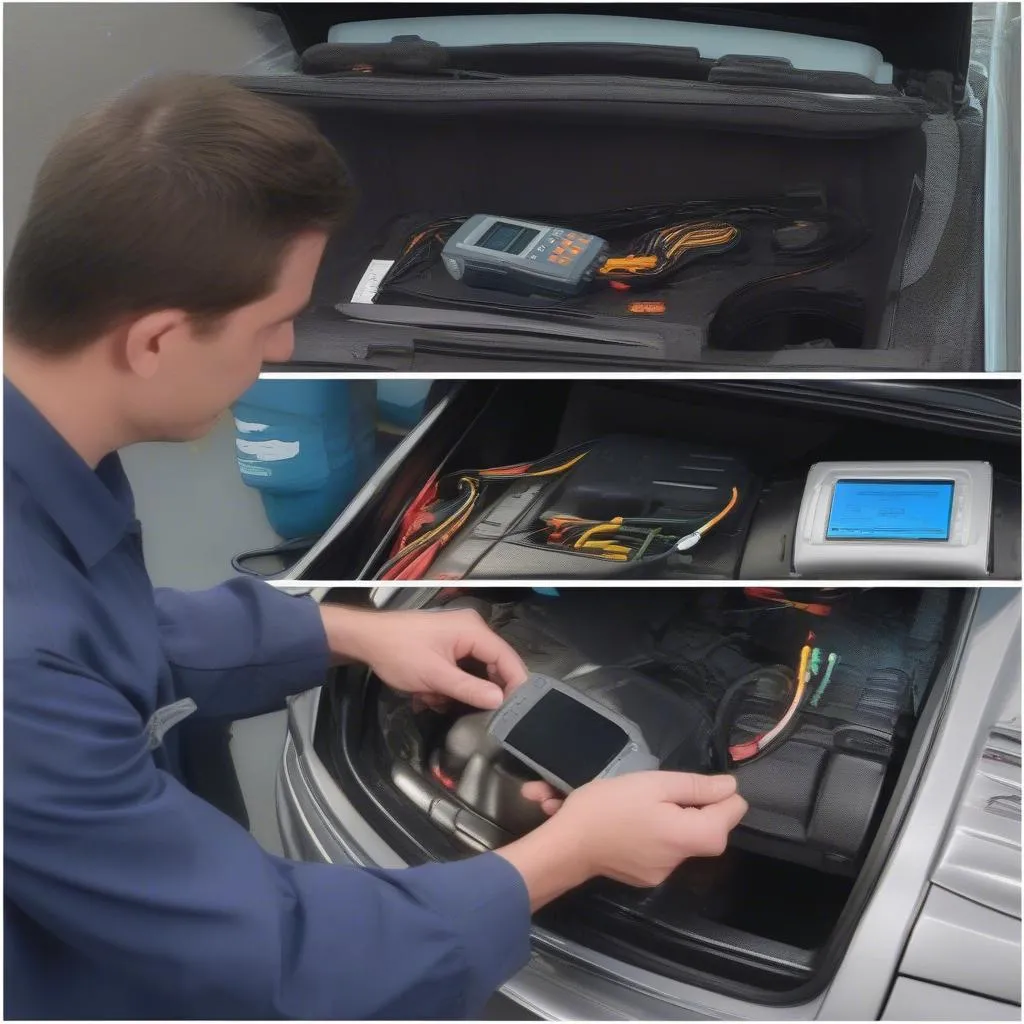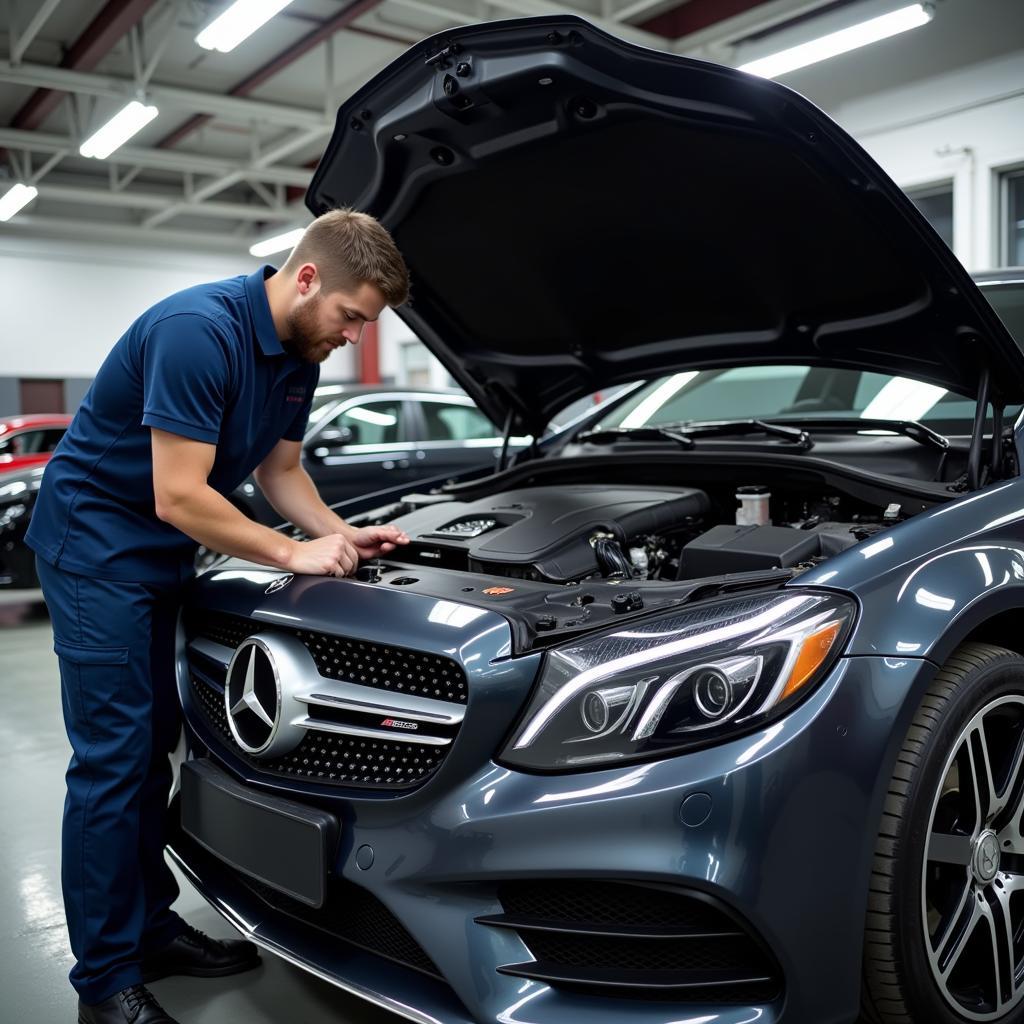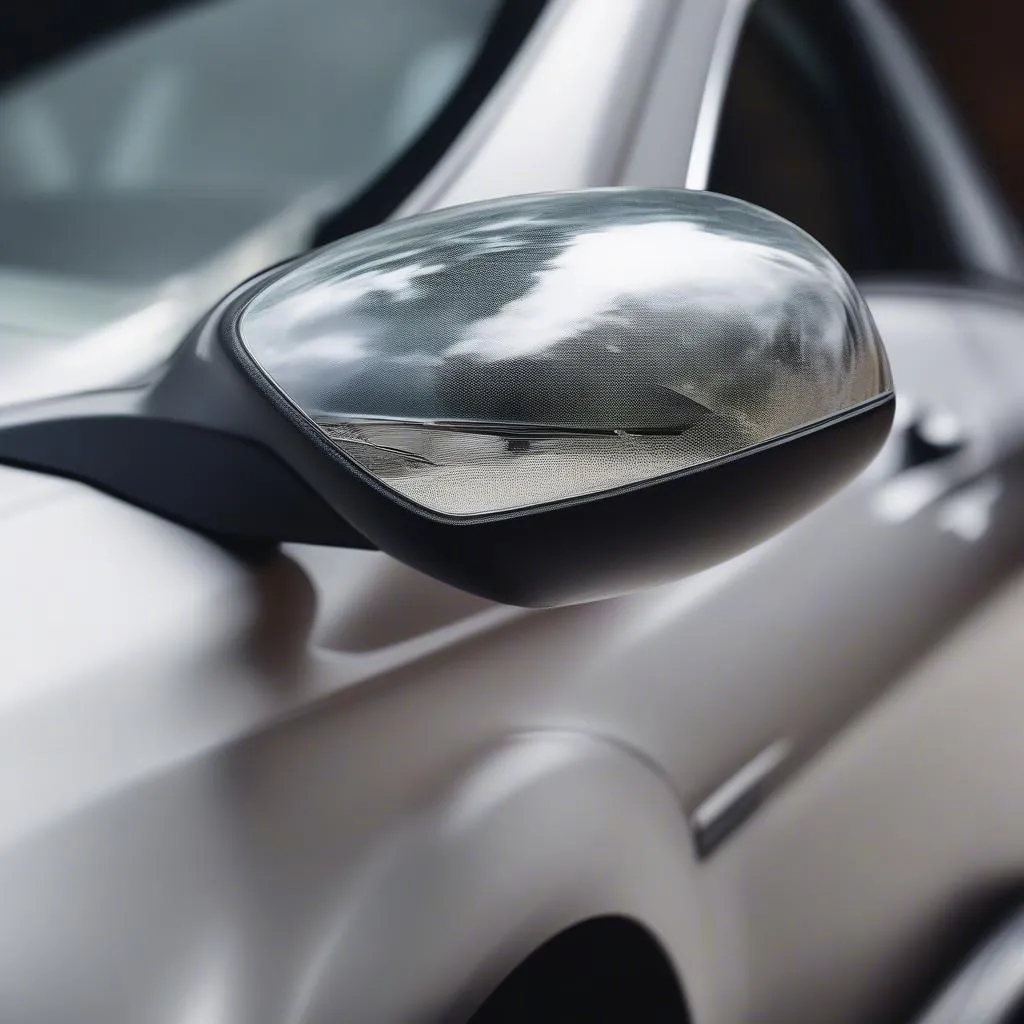Experiencing a clunky ride in your luxurious 2004 Mercedes-Benz S-Class? A faulty ball joint might be the culprit. This guide provides a detailed look at diagnosing and fixing ball joint issues in your vehicle.
Understanding the Issue: What is a Ball Joint?
Ball joints are pivotal components of your Mercedes-Benz S Class’s suspension system. They act as a pivot point connecting the control arm to the steering knuckle, allowing for smooth turning and shock absorption. Over time, the lubrication inside the joint can dry out, leading to wear and tear, resulting in a loose and unstable feel while driving.
Recognizing the Symptoms: Is Your Ball Joint Failing?
Here are some telltale signs of a failing ball joint:
- Clunking or popping noises: You might notice these sounds during turns or when driving over bumps.
- Excessive vibration in the steering wheel: This vibration can be particularly noticeable at higher speeds.
- Uneven tire wear: A worn ball joint can cause tires to wear unevenly, especially on the inner or outer edges.
- Steering wander: Your vehicle may feel loose or drift on the road.
If you notice any of these symptoms, it’s crucial to inspect your ball joints.
Tools for the Job: Gearing Up for the Fix
Before you start working on your car, gather the necessary tools:
- Jack and jack stands: Essential for safely lifting your Mercedes-Benz S Class.
- Lug wrench: For removing the lug nuts holding the wheel in place.
- Socket set and wrench set: To remove and install bolts and nuts.
- Ball joint separator tool: For safely separating the ball joint from the steering knuckle.
- Torque wrench: For tightening bolts and nuts to the correct specifications.
- New ball joint(s): Make sure to purchase high-quality replacements compatible with your Mercedes-Benz S Class.
The Fix: Replacing the Ball Joint
Here’s a step-by-step guide to replacing your ball joint:
- Safety First: Park your vehicle on a level surface, engage the parking brake, and place wheel chocks behind the rear wheels.
- Access the Ball Joint: Use the jack to lift the front of your vehicle and secure it on jack stands. Remove the wheel on the side where you’ll be replacing the ball joint.
- Disconnect Components: Locate the ball joint connected to the control arm and steering knuckle. Disconnect the cotter pin and loosen the castle nut.
- Separate the Ball Joint: Using the ball joint separator tool, carefully separate the ball joint from the steering knuckle.
- Remove and Install: Once separated, remove the old ball joint from the control arm. Install the new ball joint, ensuring it is properly seated.
- Reassemble and Torque: Reassemble the components in reverse order, tightening all bolts and nuts to the manufacturer’s specifications using a torque wrench. Don’t forget to install a new cotter pin.
- Lower and Test Drive: Carefully lower your vehicle using the jack and test drive to ensure the issue is resolved.
 Mercedes Benz Ball Joint Replacement
Mercedes Benz Ball Joint Replacement
Frequently Asked Questions
Q: Can I drive with a bad ball joint?
While technically possible, driving with a worn ball joint is highly discouraged. It significantly compromises vehicle handling and safety, potentially leading to accidents.
Q: How much does it cost to replace a ball joint on a 2004 Mercedes S Class?
The cost can vary depending on labor rates and whether you choose to DIY or visit a mechanic. On average, expect to pay between $200 and $500 per ball joint for parts and labor.
Q: Can a diagnostic tool help identify a bad ball joint?
While a diagnostic tool like those offered by CARDIAGTECH can be helpful in identifying some suspension issues, it might not always pinpoint a bad ball joint directly. A physical inspection is often necessary.
 Car Diagnostic Tool in use
Car Diagnostic Tool in use
Q: How often should ball joints be replaced?
There’s no strict schedule, but inspecting them every 60,000 miles or when you get other suspension work done is a good practice.
Q: Can I replace just one ball joint?
While possible, it’s generally recommended to replace ball joints in pairs (both sides) to ensure even wear and consistent handling.
In Conclusion
A smooth and controlled ride is crucial for enjoying the luxury and performance of your 2004 Mercedes-Benz S-Class. Addressing a failing ball joint promptly not only restores your driving experience but ensures safety on the road. If you’re unsure about tackling this repair yourself, seeking professional assistance from a qualified mechanic is always a good idea.


